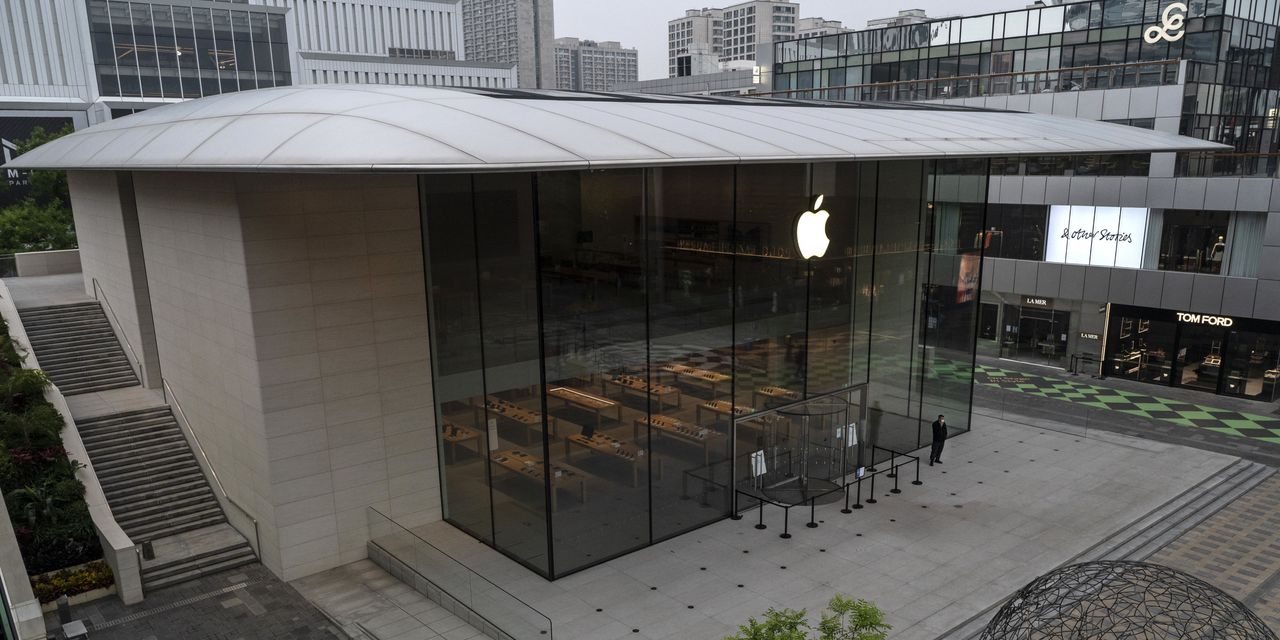This new price—roughly $142 a share on Thursday—is, of course, bad for the technology behemoth. After Wednesday’s trading, Apple (ticker: AAPL) lost its No. 1 ranking as the world’s most valuable company to Saudi Aramco (2222.SA), the energy giant backed by Saudi Arabia.
But perhaps even more disturbing: It’s an ominous sign for the market.
Since early November, Apple shares have found a bottom at $150 each, an amount that investors drew in. They didn’t buy, though, at $150 this time.
And their decision to stay on the sidelines makes it much tougher to know where that bottom price is—and much easier to think that stock will just keep dropping. Shares are already down more than 21% for the year.
Do not wonder if investors are unsettled. They think: If Apple can’t hold the line, how can the broader market fare much better or even as well?
And they’re right to ask. the
S&P 500
is down 17% for the year, pushed down—in the most simplest of terms—by anxiety. They’re watching the global economy struggle with China’s zero-Covid-19 policy and Russia’s attack on Ukraine.
And on the home front, the Federal Reserve is trying to both bring down sky-high prices and keep the labor market strong—fallout from the pandemic and the war.
In the past couple of months, the central bank has set off on a path of lifting interest rates and reducing its bondholdings to fight an annual inflation rate that Americans haven’t seen in 40 years.
The higher interest rates have made borrowing more expensive for everyone, including companies, and the slashing of bondholdings has triggered a Treasury bond selloff, bringing bond yields higher. And higher yields on long-dated bonds make future profits for growth companies—like Apple—less valuable.
But Apple is unique, or at least unusual, because it is such a force in the broader market. Its market capitalization is about 7% of the S&P 500’s aggregate market cap, which is significant because the index’s level is weighted by its components’ market values.
And until Wednesday, Apple had the highest market value of any company. Now, that title belongs to Saudi Aramco.
Stocks with greater market values have a heavy influence on the movements of the index. So when Apple stock declines, it’s hard for the S&P 500 to gain much. That dynamic was in full view Thursday: the Invesco S&P 500 Equal Weight Exchange-Traded Fund (RSP), which weights every stock in the index equally, was up 0.1% by early afternoon. But the market-cap-weighted S&P 500 was down 0.7%—Apple, down 3%, was the drag.
Finally, there can be no denying that Apple’s decline speaks volumes about market sentiment.
Usually, when markets are concerned about the economy and earnings growth, the stocks that get hit the hardest are the ones that see a rapid decline in earnings expectations. Apple’s profit stream is seen as high quality and consistent.
The fact that Apple is getting hit so hard is a red flag that investors are waving: One belief could be, in serious numbers, that economic demand could lack enough for shoppers to think twice about buying that new iPhone, or iPad, or Mac.
“It is a troubling sign when investors sour on best of breed names in an already difficult tape,” wrote Nicholas Colas, co-founder of DataTrek. “AAPL’s move today is one more reason we remain very cautious on stocks.”
Apple is top name—and has been. And with that ranking and reputation comes the big role it plays in the broader maker. Keep an eye on the tech giant. It can tell a lot about where things are headed.
Write to Jacob Sonenshine at jacob.sonenshine@barrons.com
